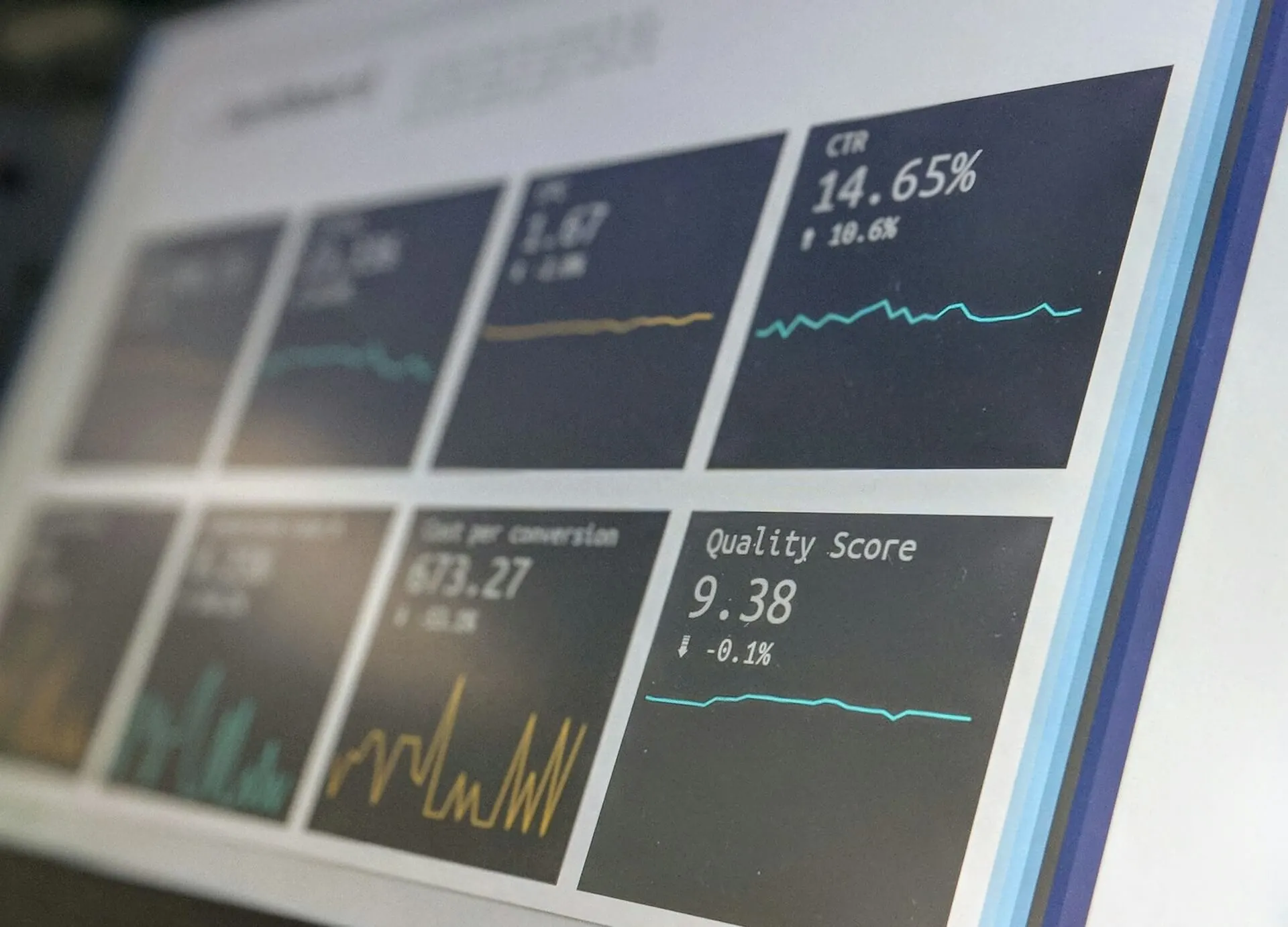Originally published June 11, 2024 , updated on August 5, 2024
White papers are powerful tools for businesses. They demonstrate thought leadership, and offer in-depth analysis. They also provide valuable insights and perspectives into what’s happening in the relevant industry. However, creating a compelling white paper is only part of the challenge. To truly maximise its impact, you must have a robust distribution strategy. A white paper writing service can create effective strategies for distributing your content. In this way, your white paper reaches the right audience and delivers the intended results.
Why White Paper Distribution Matters

Even the most well-researched and professionally written white paper will not achieve its goals if it doesn’t reach its intended audience. Distribution is crucial because it:
- Increases Visibility: Ensures that your white paper is seen by the right people. This broadens your reach beyond your immediate network.
- Drives Engagement: Encourages readers to interact with your content. This leads to higher engagement rates and deeper connections.
- Generates Leads: Helps attract potential clients and business partners who are interested in your expertise and solutions.
- Builds Authority: Establishes your brand as a thought leader in your industry. This enhances your reputation and credibility.
Key Objectives of White Paper Distribution
Before diving into the distribution strategies, it’s essential to define your objectives clearly. Professional white paper writers will consider the following goals:
- Reaching a Targeted Audience: Ensuring that your white paper reaches the people who will benefit most from its content. This increases its relevance and impact.
- Driving Traffic to Your Website: Attracting visitors to your site can lead to higher conversion rates and better SEO rankings.
- Generating Qualified Leads: Capturing contact information from readers for follow-up allows you to nurture these leads into customers.
- Establishing Brand Authority: Positioning your company as an expert in your field can differentiate you from competitors. It also helps build trust with your audience.
Crafting a Distribution Plan
The first step in crafting an effective distribution plan is to identify your target audience. This involves understanding who will benefit most from your white paper.
Identifying Your Target Audience
When identifying your target audience, White paper writing services will consider the following:
- Industry: Which industries are most relevant to your content? Focus on sectors where your insights can make the most significant impact.
- Job Roles: What roles within those industries are you targeting? Identify decision-makers, influencers, and end-users. They will find your white paper valuable.
- Pain Points: What specific problems or challenges does your white paper address? Tailor your content to resonate with the needs and concerns of your audience.
Creating Audience Personas
Creating detailed audience personas can help you understand and segment your target audience more effectively. Include information such as:
- Demographics: Age, gender, location, education, and income level.
- Professional Background: Job title, industry, years of experience, and professional goals.
- Challenges and Pain Points: Specific issues your audience faces. How does your white paper address them?
- Content Preferences: Types of content they prefer (e.g., articles, videos, infographics). What are the preferred channels for consuming content?
Choosing the Right Channels
Once you have identified your target audience, the next step is to choose the most effective channels to reach them. Some of the most popular channels a white paper writing service will use include:
- Email Marketing: Directly reach out to your audience with personalised email campaigns. These should highlight the value of your white paper.
- Social Media: Leverage platforms like LinkedIn, Twitter, and Facebook to promote your white paper. It’s also great for engaging with your audience.
- Content Syndication: Partner with other websites and platforms to distribute your content more broadly. In this way, it reaches new audiences.
- Paid Advertising: Use PPC campaigns to promote your white paper on search engines and social media. Make sure to target specific demographics and interests.
- Webinars and Events: Share your white paper during online webinars and industry events. This can position it as a valuable resource and generate real-time engagement.
Building a Targeted Email List
A targeted email list is crucial for effective white paper distribution. Focus on building a list that includes:
- Existing Clients: They are already familiar with your brand and more likely to engage with your content. Send personalised emails to maintain their interest.
- Prospective Leads: Individuals who have shown interest in your products or services. Use lead magnets like newsletters, free trials, and other gated content to capture their information.
- Industry Influencers: Thought leaders who can help amplify your content by sharing it with their followers. Personalise your outreach to explain the mutual benefits of sharing your white paper.
Crafting Compelling Email Campaigns
Your email campaigns should be designed to capture attention and drive action. Consider hiring a white paper writing service as they have the necessary expertise in the following:
- Subject Lines: Compelling subject lines entice people to open the email. Consider using questions, statistics, or a sense of urgency.
- Email Body: Provide a brief overview of the white paper’s value. What readers will gain from it? Use bullet points to highlight key benefits and make the content scannable.
- Call to Action: Include clear and compelling CTAs. This should encourage recipients to download the white paper. Use action-driven language and make the CTA button stand out by using a button or image..
Timing and Frequency
The timing and frequency of your email campaigns can significantly impact their success. Consider the following best practices when using a white paper writing service:
- Optimal Send Times: Research suggests that emails sent on Tuesdays generally enjoy higher open rates. Emails sent at 11 am also tend to do better with open rates. Aim to send emails during mid-morning or early afternoon. This is when recipients are most likely to check their inboxes.
- Follow-Up Emails: Don’t rely on a single email. Send follow-up emails to remind recipients about your white paper. Highlight different aspects or benefits they may have missed.
Choosing the Right Social Media Platforms

Different social media platforms offer unique advantages. Choose the platforms that best align with your target audience:
- LinkedIn: Ideal for B2B marketing and reaching professionals. Share your white paper in relevant groups. Encourage staff to share it with their connections.
- Twitter: Great for sharing snippets and engaging with a broad audience. Use relevant hashtags, and tag industry influencers. Remember to participate in Twitter chats.
- Facebook: Useful for targeting specific demographic groups through ads. Create engaging posts to invite conversation. Consider using Facebook Groups for more targeted sharing.
Creating Engaging Content
To maximise impact on social media, create content that stands out. Professional white paper writers will consider:
- Teasers and Previews: Share snippets or key takeaways from the white paper. This will pique reader interest. Use quotes, statistics, and intriguing questions to draw readers in.
- Visual Content: Incorporate infographics, videos, and images to enhance the engagement of your posts. Content with graphics is more likely to be shared. It can also increase your reach.
- Interactive Posts: Encourage likes, shares, and comments to increase visibility. Ask questions, create polls, and prompt discussions to engage your audience.
Paid Social Media Campaigns
Investing in paid social media campaigns can amplify your reach and target specific audience segments. Key strategies include:
- Targeted Ads: Use the advanced targeting options on platforms. LinkedIn and Facebook can be used to reach your ideal audience. This can be based on demographics, job roles, and interests.
- Sponsored Content: Promote your white paper through sponsored posts that appear in the feeds of your target audience. Ensure these posts are visually appealing. Remember to highlight the value of your white paper.
- A/B Testing: Try out various ad designs, copy, and targeting strategies. This will help you determine what works best for your audience.
Content Syndication and Partnerships
Partnering with industry-specific websites can help extend your reach. Look for:
- High Traffic Sites: Platforms that attract a significant amount of traffic from your target audience. These sites help you reach a larger and more relevant audience.
- Relevant Content: Websites that publish content relevant to your white paper. Ensure there is alignment between your white paper’s topic and the site’s audience interests.
Guest Blogging
Guest blogging is another effective way to distribute your white paper. When writing guest posts a white paper writing service will:
- Link Back to Your White Paper: Include links to your white paper within the content. This can drive traffic and improve your SEO.
- Target High Authority Blogs: Aim for blogs with a high domain authority to boost your credibility. Reach out to popular industry blogs. Offer valuable content that complements their existing posts.
- Cross-Promotion: Partner/collaborate with other businesses or thought-leaders in your industry. This can include co-authoring white papers, and sharing each other’s content. You can also promote through each other’s networks.
Paid Advertising
PPC campaigns can be a cost-effective way to promote your white paper. Key strategies include:
- Keyword Targeting: Use keywords related to your white paper’s content to reach interested audiences. Research and select high-intent keywords that indicate a strong interest in your topic.
- Audience Segmentation: Segment your audience based on demographics, interests, and behaviours. Create targeted ads that speak directly to each segment’s needs and preferences.
- Ad Copy: Craft compelling ad copy that highlights the benefits of your white paper. Use clear and concise language. Include a strong CTA to encourage clicks.
Social Media Ads
Social media platforms offer advanced targeting options. When running social media ads:
- Target Specific Audiences: Use demographic and interest-based targeting to reach your ideal audience. Leverage lookalike audiences to find users similar to your existing customers.
- Ad Formats: Experiment with different ad formats. This includes carousel ads, video ads, and sponsored posts. Test multiple formats to see which resonates with your audience.
- Retargeting Campaigns: Use retargeting to reach previous users of your website. They can also be users who have engaged with your social media content. Remind them to download your white paper and keep your brand top of mind.
Promoting Your White Paper on Webinars
Webinars and events provide an excellent platform to promote your white paper. Key strategies include:
- Pre-Event Promotion: Share details about your white paper in promotional materials. Email marketing, social media, and event pages can build anticipation and interest.
- During the Event: Mention the white paper during presentations and discussions. Provide attendees with insights and teasers. Encourage them to download the full document.
- Post-Event Follow-Up: Send attendees a copy of the white paper as part of your follow-up communications. Include a thank-you note and invite them to provide feedback or ask questions.
Engaging with Attendees
To maximise the impact of your white paper through webinars and events, a white paper writing agency will offer:
- Interactive Q&A Sessions: Encourage questions and discussions related to the white paper’s content. This can provide valuable insights and foster a sense of community.
- Networking Opportunities: Facilitate networking sessions where attendees can discuss the white paper. Use breakout rooms, chat features, and social media groups. These can encourage connections and conversations.
- Recording and Sharing: Record your webinar and make it available on-demand. Share the recording with the white paper for those who couldn’t attend live.
Measuring and Optimising Your Distribution Strategy
To determine the success of your distribution efforts, track key metrics such as:
- Download Rates: How many people have downloaded your white paper? This indicates the effectiveness of your distribution channels and messaging.
- Engagement Rates: How engaged are readers with your content? Monitor and track metrics such as time spent on page, social likes, saves and shares, as well as the comments.
- Lead Generation: How many qualified leads have been generated? Track the number of leads captured through forms, email sign-ups, and other lead generation methods.
- Website Traffic: How much traffic has been driven to your site? Analyse the sources of traffic. This helps identify which channels are most effective.

Analysing Feedback
Collect and analyse feedback to understand how your audience is responding to your white paper. This can include:
- Reader Surveys: Conduct surveys to gather insights on reader perceptions and experiences. Ask about the usefulness of the content, and areas for improvement. You can also ask questions on other topics of interest.
- Social Media Engagement: Monitor comments, likes, and shares. Engage with your audience. Respond to comments and questions to build a sense of community.
- Direct Feedback: Reach out to key stakeholders and ask for their feedback. This can provide in-depth insights and help you refine your content and distribution strategy.
Optimising Your Strategy
Based on your analysis, optimise your distribution strategy. White paper writing services will ensure this process involves:
- Adjusting Targeting: Refine your audience targeting based on what you’ve learned. Focus on the channels and segments that have shown the highest engagement and conversion rates.
- Improving Content: Update your white paper to address any gaps or areas for improvement. Use feedback from readers to enhance the relevance and value of your content.
- Experimenting with Channels: Test new distribution channels to expand your reach. Consider emerging platforms, partnerships, and innovative marketing tactics. In this way, you also stay ahead of the curve.
Conclusion
Effective distribution of white paper content is crucial for maximising its impact. Understanding your audience is the first step. Then, make sure to leverage multiple channels, and continuously optimise your strategy. In this way, you can ensure that your white paper reaches the right audience and achieves its intended goals. Whether you’re working with a white paper writing service like Goodman Lantern, professional white paper writers, or handling the process in-house, these strategies will help you get the most out of your white paper content.
Post Views: 1537


















